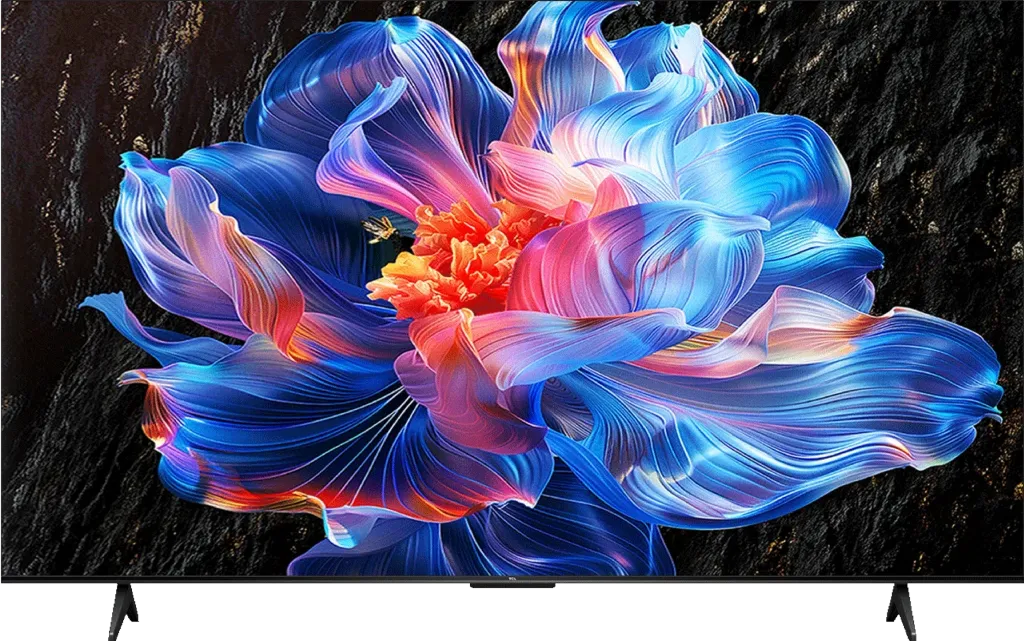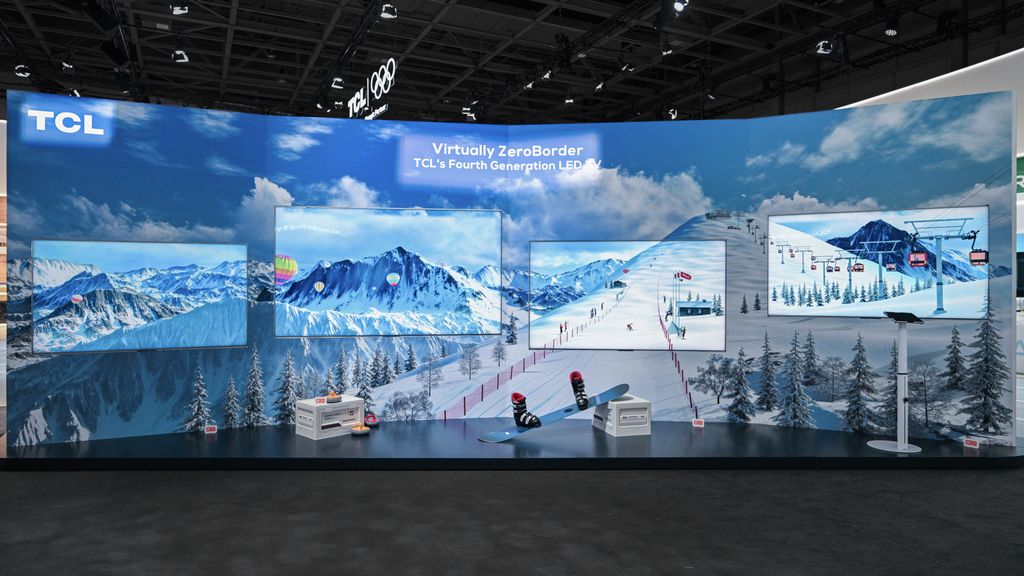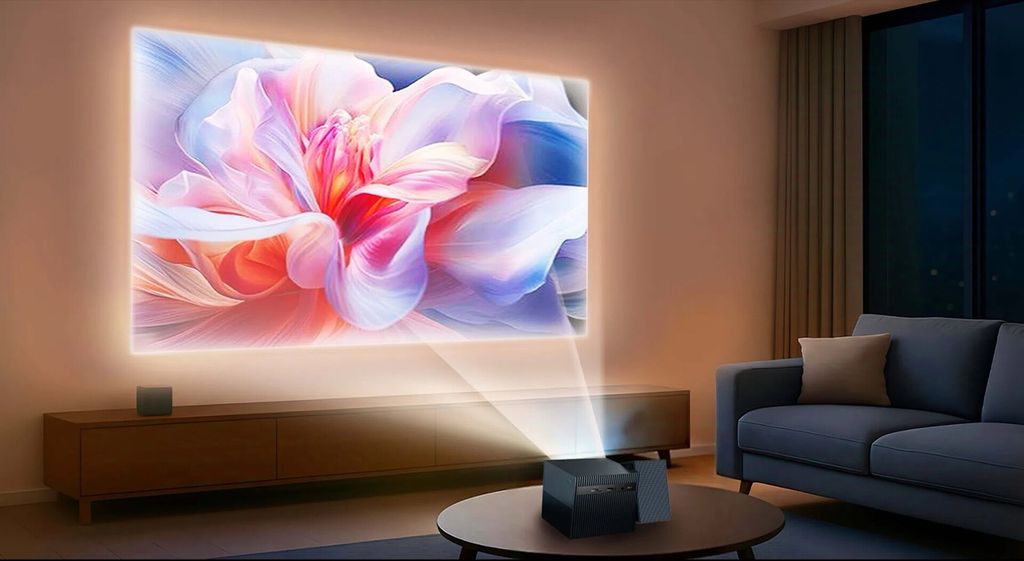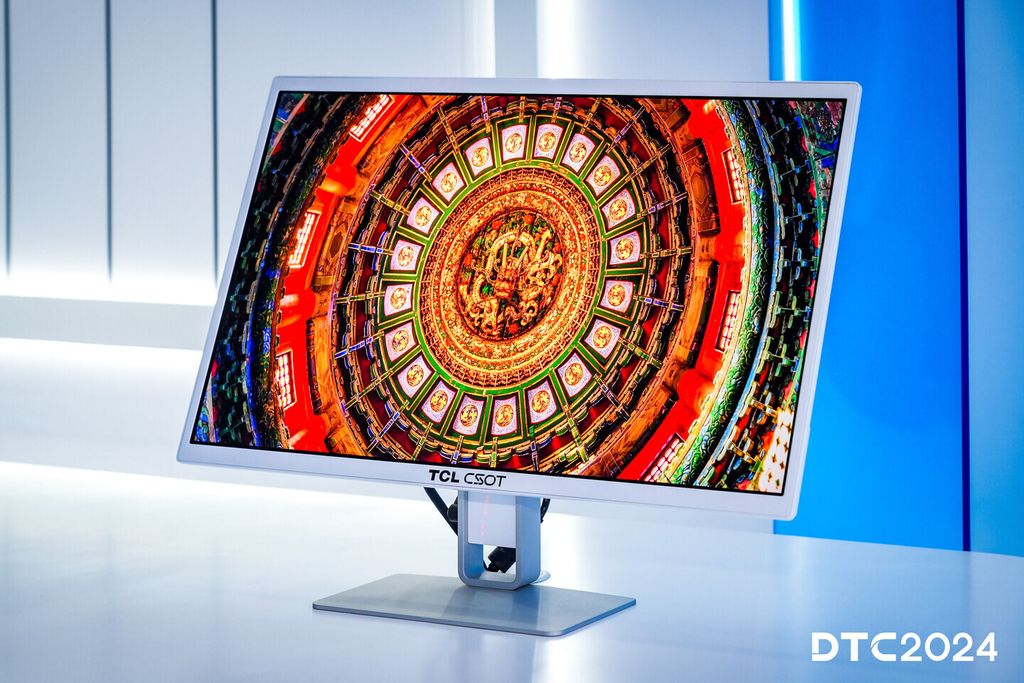- Matching (Score)
- Our verdict
- Competing TVs
- TV appearance
- Where to buy
- Contrast and black detail
- HDR effect quality
- Factory color reproduction
- Color reproduction after calibration
- Smoothness of tonal transitions
- Image scaling and smoothness of tonal transitions
- Blur and motion smoothness
- Console compatibility and gaming features
- Input lag
- Compatibility with PC
- Viewing angles
- TV efficiency during daytime
- TV features
- Apps
- Playing files from USB
- Sound
- Details about the matrix
Panel type: LCD VA Refresh rate: 60Hz Brand: TCL Resolution: 3840x2160 System: Google TV Model year: 2025
In the TV market, there are plenty of models that tempt with their price, but it's rare to find something truly cheap with a full Google TV system. The TCK V6C belongs to this group – it’s one of the cheapest receivers with that platform, and thus naturally attracts the attention of those looking for simple access to apps and smart functions. However, the system alone is not everything. After all, a TV is primarily about the picture, and that can determine whether an evening screening ends in delight or mild disappointment. That’s why, in this test, we check how the V6C performs in every important area – from contrast and HDR, through colour reproduction, to gaming latency.
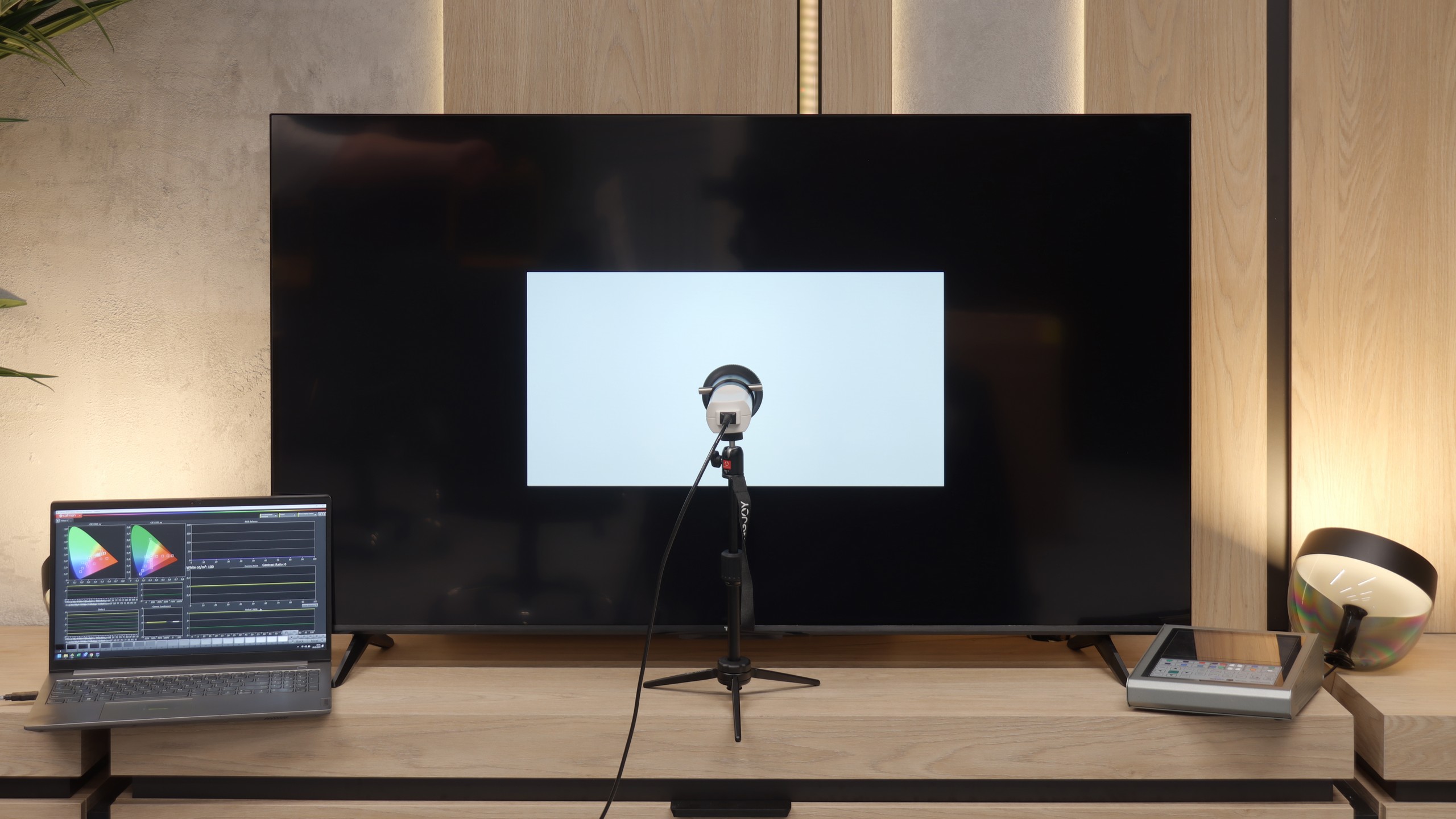
TCL V6C - Our verdict
5.2
Overall rating
The TCL V6C is a television whose appeal lies primarily in three elements: the Google TV system, several features beneficial for gamers, and a very low price. The biggest advantage is indeed Google TV – it provides access to an enormous library of apps, from the most popular streaming services to lesser-known programs, and it allows the use of AirPlay, screen mirroring, and voice search. For many users, this system alone may be a sufficient reason to consider a purchase. Additionally, there are simple yet practical features for gamers, such as ALLM mode, low input lag, and a Game Bar with parameter previews, which make occasional gaming on a console more convenient. The third argument, and perhaps the most important, is the price – it’s hard to find another model with Google TV in this class that offers such wide access to smart features. However, when it comes to picture quality, it’s clear that we are dealing with a significant number of compromises. The V6C is a very dim television. Colours remain dull, and in more demanding scenes, the image can be flat and lacking in detail. The contrast provided by the VA panel can be considered decent, but this comes at the cost of weak viewing angles. Additionally, there is motion blur in dynamic sports scenes, as well as an unnatural upscaling effect that often artificially sharpens details instead of enhancing them. So, who is this model for? The V6C is a television that will work well as a simple device for everyday watching of TV or YouTube, and its greatest strength is its operating system and low price. However, if we’re hoping for budget-friendly cinematic experiences or comfortable gaming in modern titles, this model will quickly reveal its limitations. Therefore, when purchasing it, one must be clear about what they are choosing – it’s a television for simple tasks, not a device that is meant to impress with picture quality.
Advantages
Attractive price
Advanced GoogleTV system with a large app library
Decent contrast thanks to the VA panel
Quite a good functioning dynamic tone mapping feature (often saves the TV in HDR content)
Low input lag below 15 ms
Presence of ALLM mode and simple Game Bar
Support for Dolby Vision Gaming (Xbox Series S/X)
Support for Dolby Atmos and DTS:X, making it easier to use with a soundbar
Disadvantages
Very low brightness (~200 nits) = no cinematic effects
Narrow colour gamut coverage, especially in HDR content
Poor Dolby Vision implementation
Strong motion blur in dynamic scenes (panel only 60 Hz)
Average upscaling – the image can be artificially sharpened
Unusual subpixel arrangement making font readability difficult when working with PC
Limited viewing angles typical of VA panels
The TV performs poorly in heavily sunlit rooms
Google TV system can be sluggish and doesn't operate as smoothly as in more expensive models
No USB recording feature or Picture-in-Picture mode
Movies and series in UHD quality
4.9
Classic TV, YouTube
5.0
Sports broadcasts (TV and apps)
3.9
Gaming on console
6.0
TV as a computer monitor
4.0
Watching in bright light
3.6
Utility functions
7.3
Apps
9.6
Sound quality
5.8
Complete the survey to find out what fits your preferences
TCL V6C - Competing TVs in this price range
TCL V6C - TV appearance
HDMI inputs: 3 x HDMI 2.0, 0 x HDMI 2.1 Outputs: Toslink (Optical audio), eARC (HDMI), ARC (HDMI) Network Interfaces: Wi-Fi 2.4GHz, Wi-Fi 5GHz, Ethernet (LAN) 100Mbps
Build quality: Average
Stand type: Legs
Bezel colour: Graphite
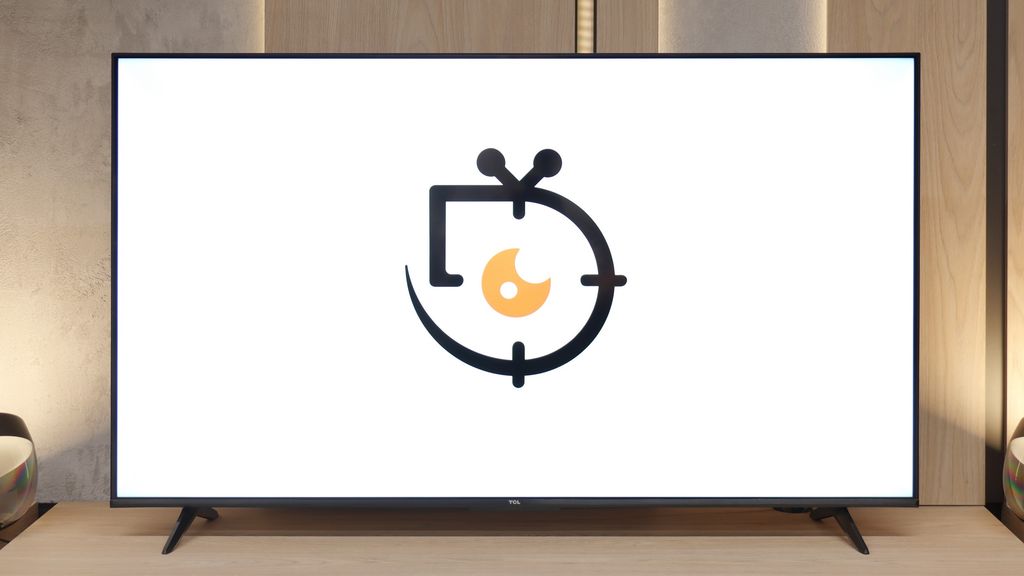
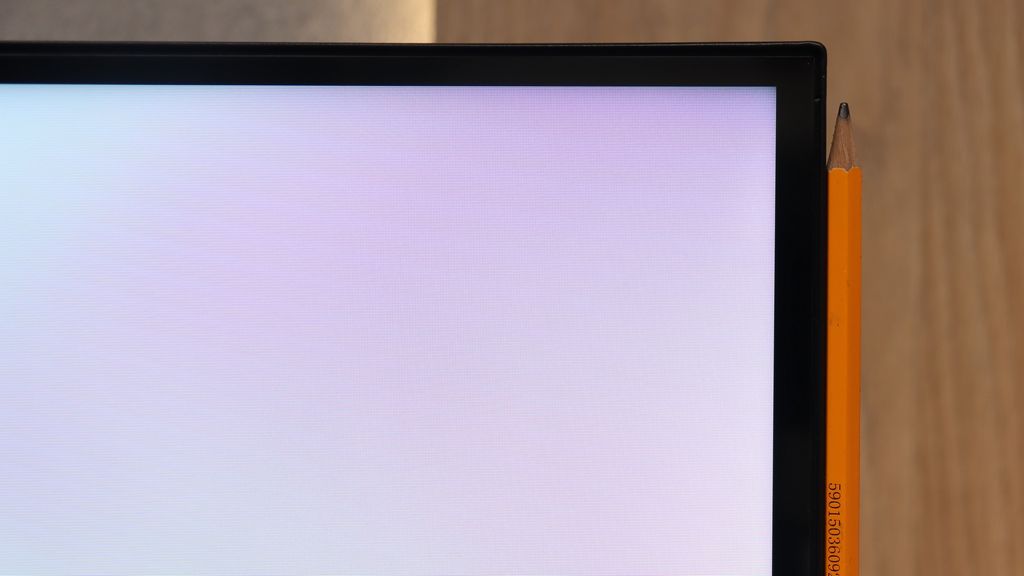
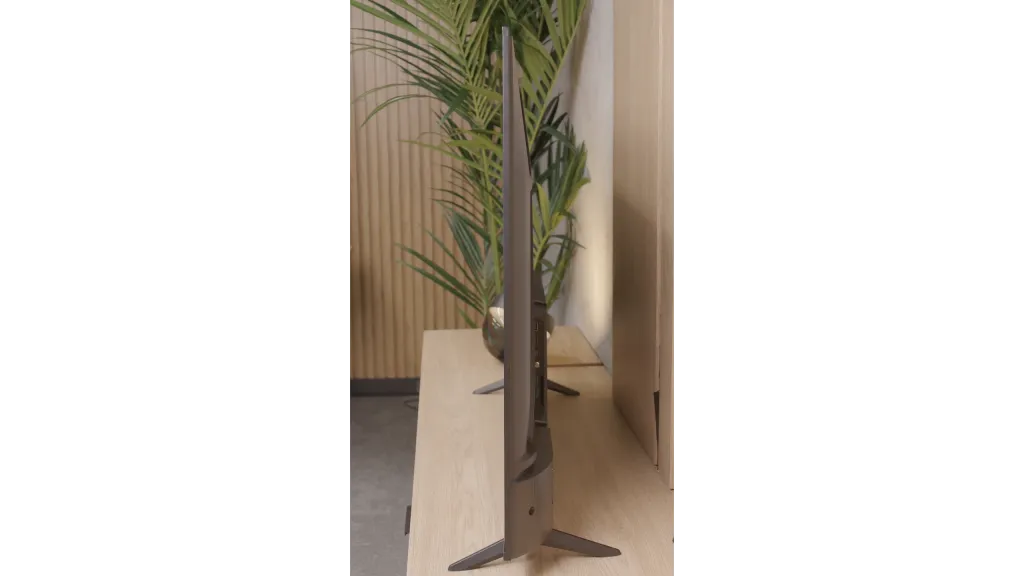
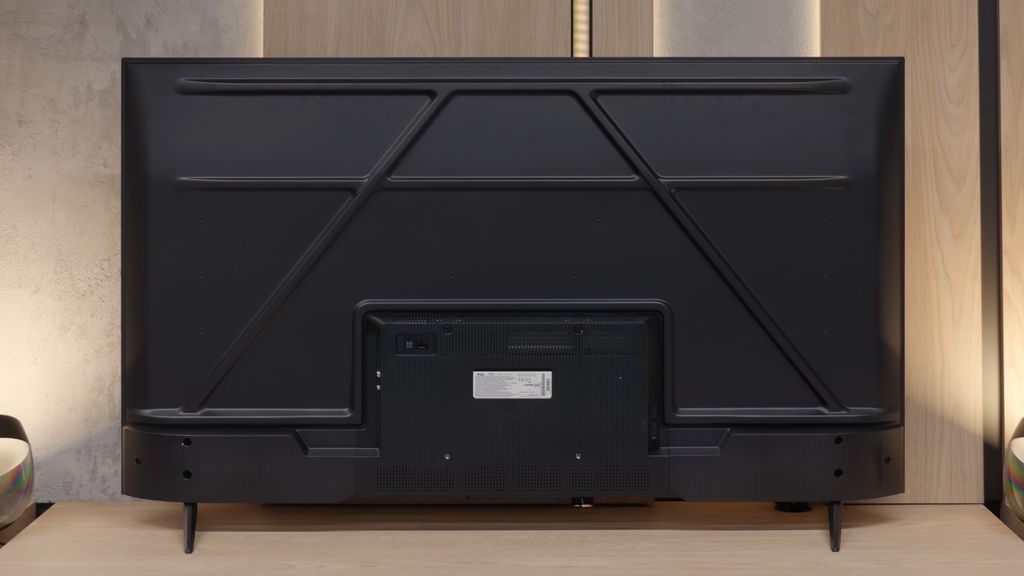
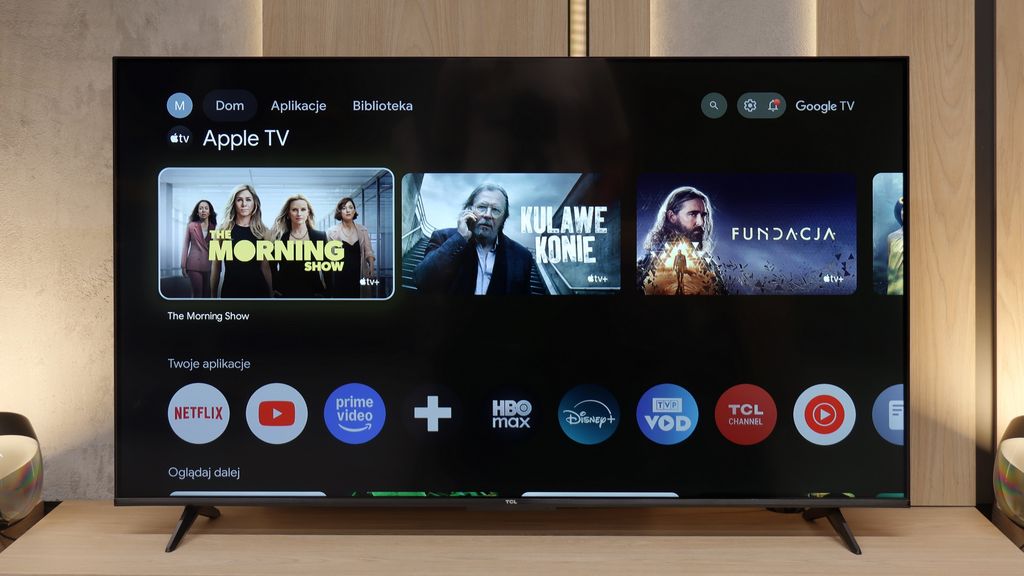
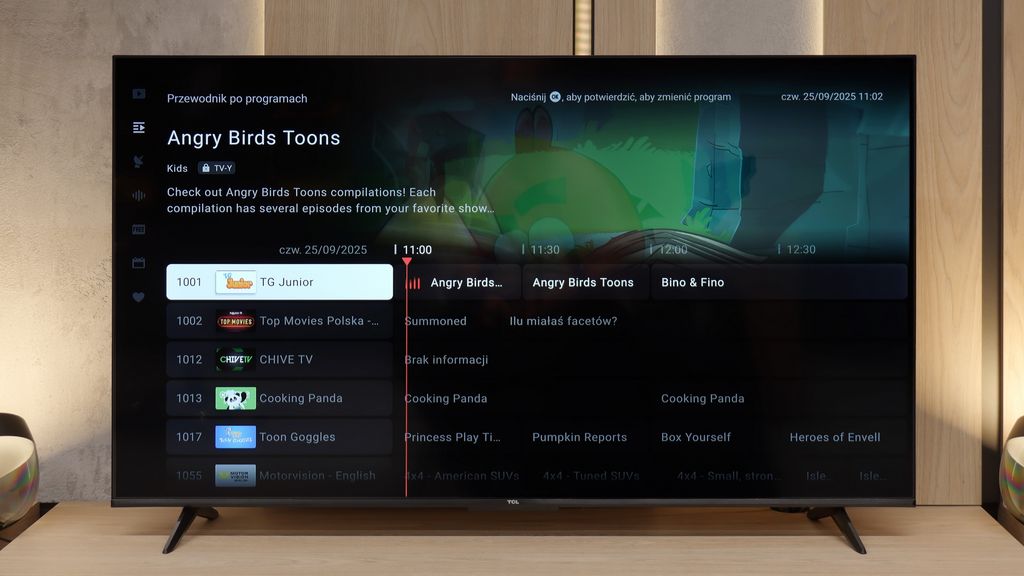
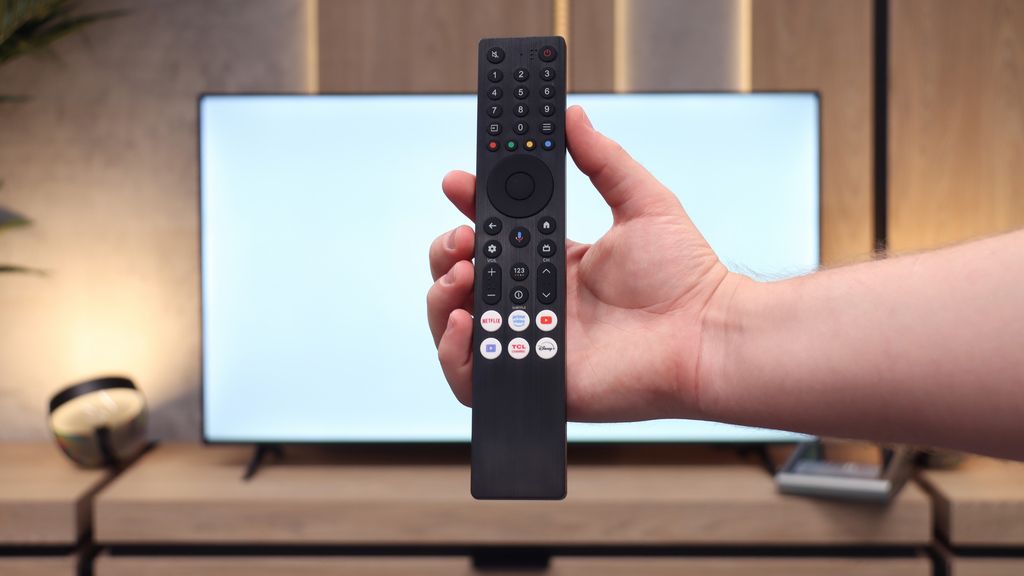
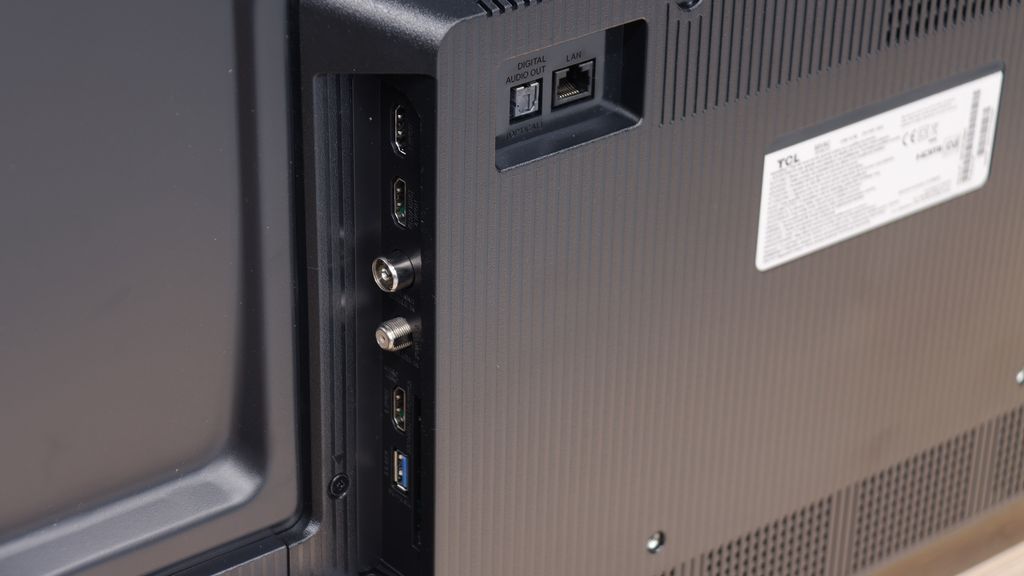
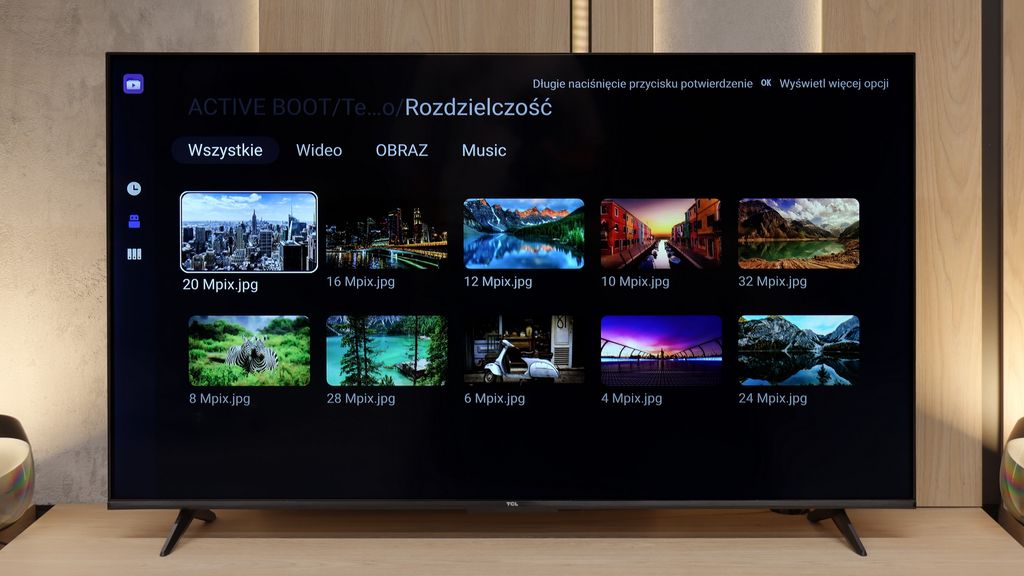
Stand: Fixed
Flat design: No
Accessories: Stand
The TCK V6C immediately lets you know that it's a budget segment television, but that doesn't mean it looks bad at all. From the front, it presents itself quite decently – a slim, black-graphite frame with a metallic finish fits the standard most manufacturers have accustomed us to. The differences only become apparent when you look at the back. You can see that the designers had to save a bit – the casing is noticeably thicker, and the components protrude in a way that makes it difficult to mount the television very close to the wall. However, for many people, this won’t be a problem, as the package also includes wide-set plastic feet. They may not look overly attractive, but they hold everything stable and do their job well.
Buy in the best price
Select size:
TCL V6C - Contrast and black detail
5.2/10
Local dimming function: No

Result
4,450:1

Result
4,900:1

Result
3,150:1

Result
4,250:1

Result
2,550:1
Visibility of details in the lights:
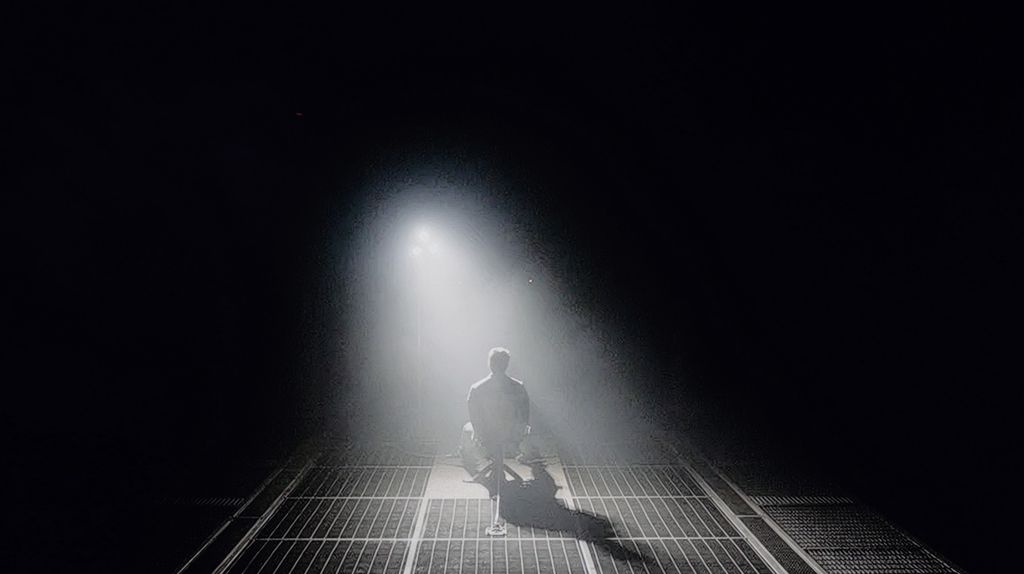
The TCK V6C uses a VA matrix, which is a solution that is considered quite a sensible choice in budget televisions. This type of panel offers high contrast and can provide pleasant experiences, especially during evening movie sessions. Of course, in this price range, it’s hard to expect local dimming – that technology is simply not present here. The effect is that blacks won’t be as deep and inky as in more expensive models, and at times they might resemble more of a shade of navy. Fortunately, this can be easily worked around – just turn on a soft light behind the television or place a small lamp in the corner of the room, and the eye will "trick" itself, making the blacks appear much better. Given the equipment in this range, the contrast can therefore be regarded as decent and sufficient for everyday viewing.
TCL V6C - HDR effect quality
3.2/10
Supported formats: HDR10, HDR10+, Dolby Vision, HLG Color gamut coverage: DCI P3: 80.3%, Bt.2020: 58.9%
Luminance measurements in HDR:

Result
149 nit

Result
163 nit

Result
193 nit

Result
172 nit

Result
196 nit
When it comes to HDR, the TCK V6C clearly shows that it is not its strong suit. A peak brightness of around 200 nits makes it difficult to talk about true HDR effects – the picture simply remains too dark to bring out details in bright scenes or convey the appropriate dynamics. Although the television formally supports many HDR formats, it is not practically equipped for such demanding content. The lack of additional layers that enhance colors, such as QLED or PFS LED, further limits the appeal of the image – in more spectacular productions, the colours may seem washed out compared to more expensive models. Therefore, the V6C will primarily serve as a television for everyday viewing, YouTube, or SDR content, rather than as equipment for high-quality cinematic experiences.
Scene from the movie “Pan” (about 2800 nits)

Scene from the movie “Billy Lynn” (about 1100 nits)

Since brightness is not a strong point of the V6C, we didn't expect too much from it when looking at its adaptation to very demanding films. In the case of spectacular blockbusters recorded with the highest image quality, like the film Pan, the television completely loses it – the image loses depth, and the dynamics are heavily flattened. On the other hand, there is no drama either; the V6C doesn't wash everything out in grey as much as happens with other budget constructions. It looks a bit better in less demanding productions, for example, in a scene from the film Billy Lynn, that is, in content similar to what we find on streaming platforms like Netflix. There, the function hidden in the menu under the name “detailed priority description” manages to recover a lot of details, even if the television does not impress with brightness. Therefore, we definitely recommend turning it on in this model.
HDR luminance chart:
HDR luminance
As can be seen in the comparative photo, content recorded with static HDR10 metadata can look surprisingly good – mainly thanks to the aforementioned "detail priority description" feature. The image in this mode presents itself quite decently, with a lot of detail that doesn't spoil the overall perception of the television. Naturally, we expected that by using dynamic metadata, such as Dolby Vision or HDR10+, the V6C would show even better results than with its own image adaptation. However, it turned out that this model is somewhat of an exception to the rule – content presented in Dolby Vision may look worse than in HDR10. This is quite an unusual situation, which shows that in the world of budget televisions, sometimes theoretical advantages do not always translate into practical effects.
Static HDR10

Dynamic: Dolby Vision

Factory color reproduction
4.8/10
We started colour reproduction tests with the Filmmaker mode, which in theory should be the best choice straight out of the box. It certainly performs better than the Eco or Dynamic modes, which heavily interfere with the image and spoil its natural character. As you can see in the graphs, the factory tuning of the V6C is not ideal, although it's not a disaster either. The biggest issue turned out to be a lack of red – the TV clearly "cools" the image, which is especially noticeable on human faces, giving a "zombie skin" effect. This particular issue was the most bothersome during everyday viewing. Looking at the colour palette in HDR content, the shortcomings in red are also noticeable, and their source is the relatively narrow coverage of the colour space. Of course, every TV can be calibrated, so we decided to check how the V6C would perform after such an adjustment.
Color reproduction after calibration
5.2/10
My dear friends – we haven't faced such a difficult "calibration battle" in years. The V6C turned out to be one of the most stubborn TVs we've dealt with in the office. The calibration trials alone took us several hours of work and required a lot of patience. We finally managed to slightly warm up the skin tones, which made faces stop looking like they were pulled straight out of a horror film, a common issue with the factory settings. Unfortunately, that wasn't the end of it – the TV reacted to our adjustments in white balance in a completely unpredictable manner. Where we expected stability in the image in a certain area, new errors appeared, and Color Checker measurements showed deviations that couldn't be rationally explained. It's hard to say whether the fault lay with the software or the design itself, but one thing is certain – the V6C put up exceptionally strong resistance. Ultimately, the calibration brought improvement, especially in SDR content, where the image became more pleasing and natural. However, it must be clearly stated that the design limitations remain. The TV still flattens the image in HDR materials and has noticeable deficiencies in colour reproduction. This is equipment more suited for everyday TV watching or SDR content rather than for cinematic experiences in the highest quality.
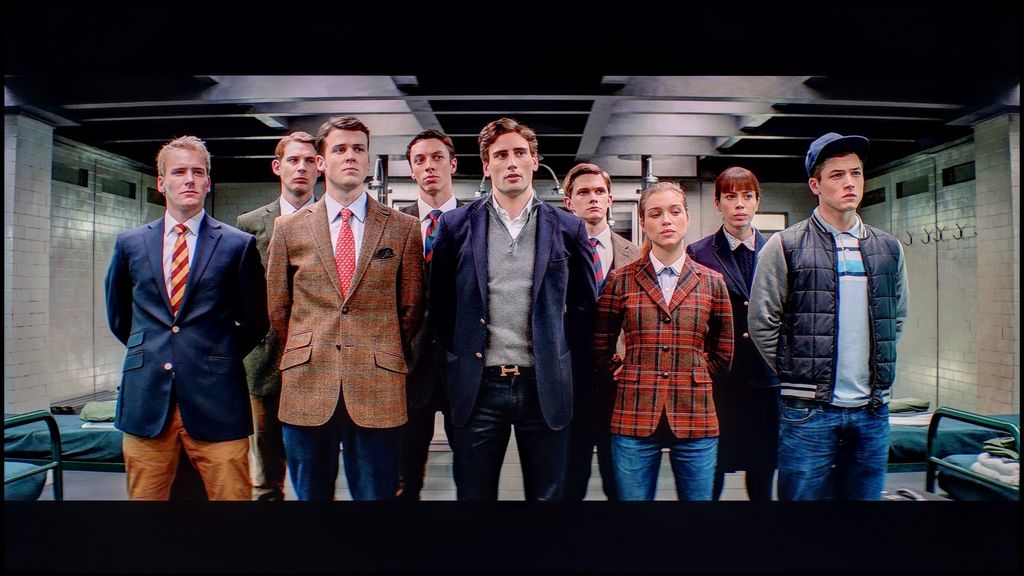

TCL V6C - Smoothness of tonal transitions
7/10
When it comes to the fluidity of tonal transitions, it doesn’t look too bad during everyday viewing. In most scenes, the image appears smooth, and the colours blend without noticeable disruptions. So you can comfortably watch movies or series without worrying about glaring artefacts. The problem only starts in more extreme moments – in very bright or exceptionally dark scenes, the V6C shows its limitations. You can then see slight "stepping" of colours, meaning a lack of perfectly smooth transitions. Fortunately, these are rather sporadic situations.








Image scaling and smoothness of tonal transitions
5/10
Smooth transition function

Image without overscan on the SD signal

When it comes to upscaling, the V6C doesn't bring anything groundbreaking to the table. Lower quality content is heavily sharpened, making the image look quite unnatural, at times almost artificial. This can be somewhat alleviated by reducing the sharpness level in the settings, but the effect isn't spectacular. The image still falls short of perfection. The digital processing itself performs better. The function responsible for smoothing tonal transitions works quite effectively, especially at the medium setting, where the image truly appears smoother. Unfortunately, its operation is rather aggressive – it heavily interferes with the overall scene, causing actors in the foreground to start looking like characters from super smooth soap operas. Therefore, we would not recommend using this option if a natural viewing experience is important to us.
TCL V6C - Blur and motion smoothness
3/10
Maximum refresh rate of the panel: 60Hz
Film motion smoothing option: Yes
Blur reduction option: No
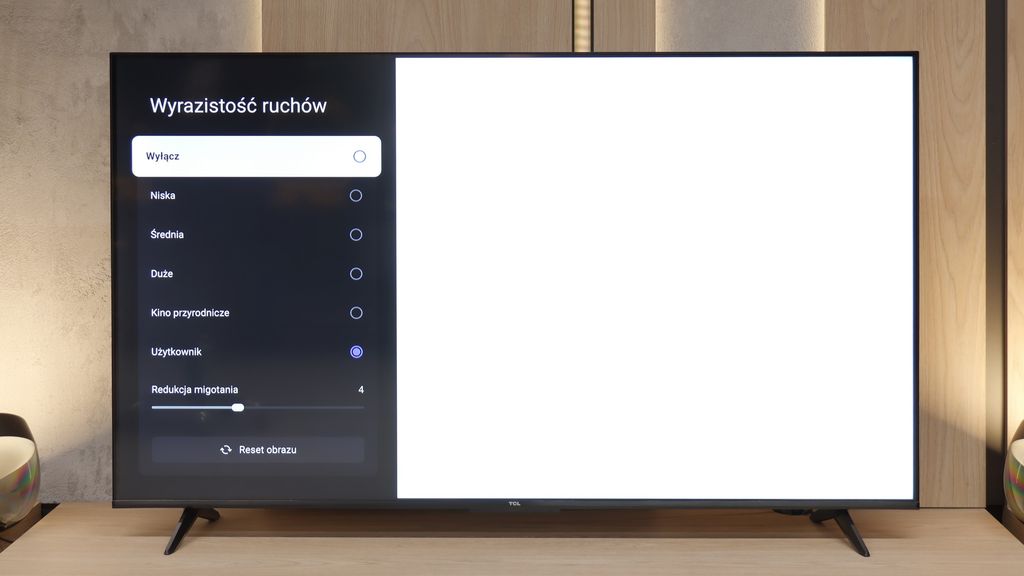
Smoothing and motion fluidity are areas where the V6C quickly reveals its limitations. It's a 60 Hz TV, so it was hard to expect miracles here. In dynamic sports scenes, the image performs rather mediocrely. This is most noticeable in darker scenes, where distinct trails and blurred "halos" follow moving objects, which can be quite distracting. This is definitely a weaker point of this model. Fortunately, there is also a small plus. The V6C is equipped with a motion smoother that works while watching movies. Thanks to it, productions filmed at 24 frames per second, which is practically all cinema titles and series, can look smoother than they were actually recorded. Importantly, the intensity of the effect can be adjusted to personal preferences – from slight smoothing to the full "soap opera effect."
Blur (native resolution, maximum refresh rate):



TCL V6C - Console compatibility and gaming features
4/10
ALLM: Yes
VRR: No
VRR range: No
Dolby Vision Game Mode: Yes
Correct implementation of HGIG: No
1080p@120Hz: No
1440p@120Hz: No
4K@120Hz: No
Game bar: Yes
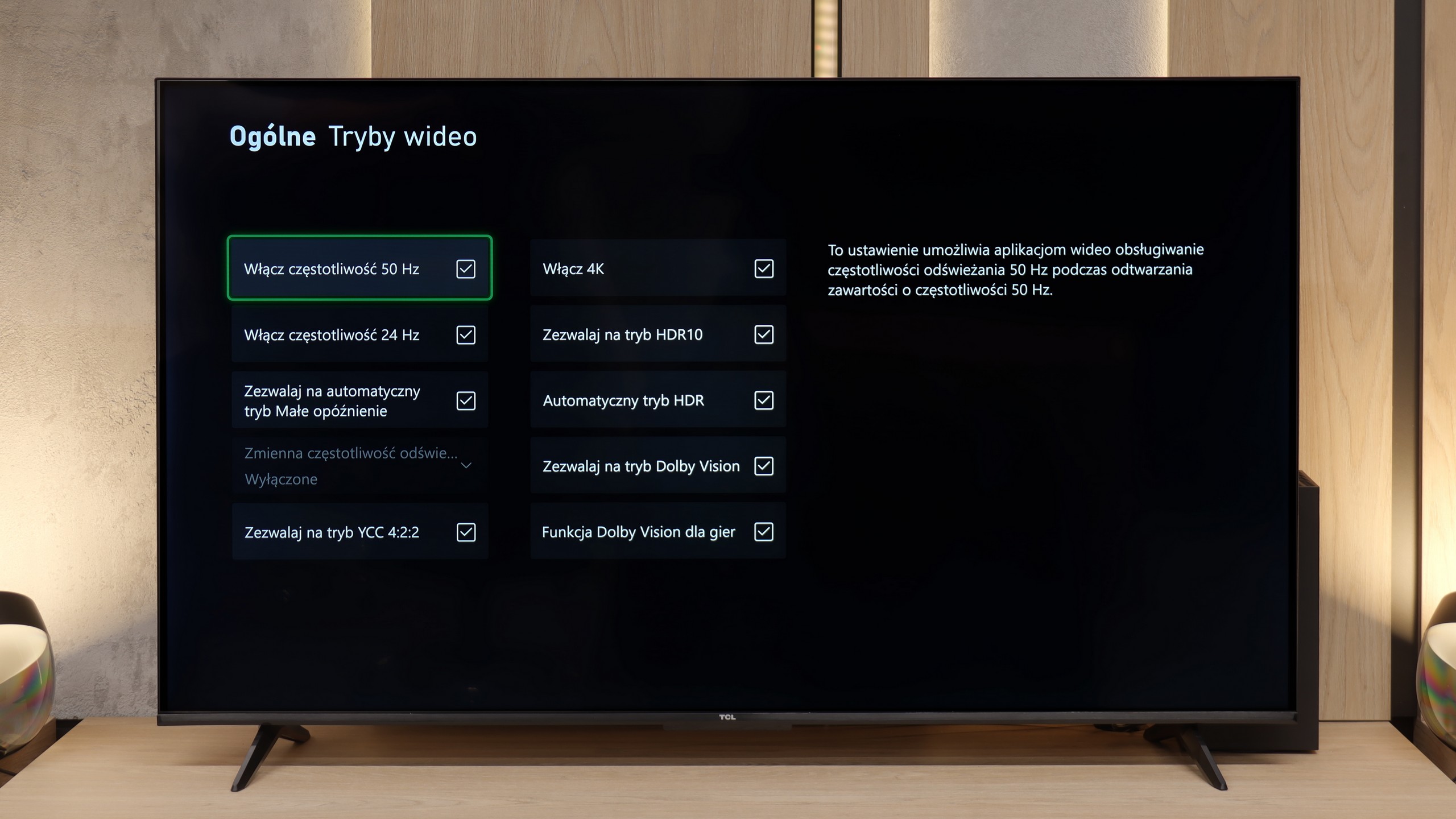
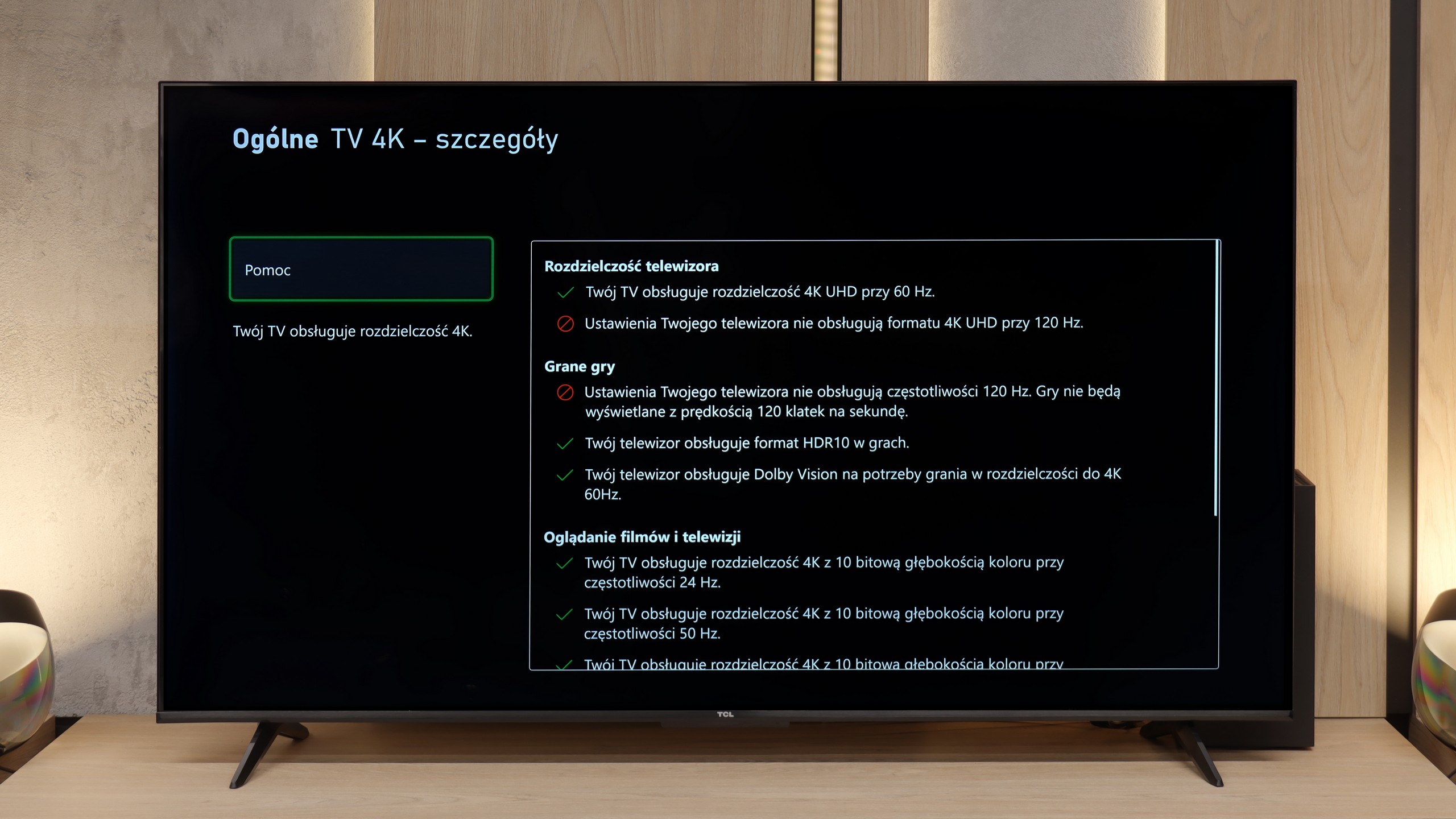
Even though the V6C is not a TV designed with avid gamers in mind, TCL has included a few features that may appeal to more casual users. You'll not find a 120 Hz panel or HDMI 2.1 ports here, but there is an ALLM mode that automatically switches the TV into low latency mode. There's also a quite practical Game Bar – a simple panel allowing the preview of basic parameters, changing the picture mode, or even enabling a virtual crosshair on the screen. Another interesting feature is the support for Dolby Vision Gaming, intended for Xbox Series S/X consoles – a nice addition, although in practice it doesn’t offer as much as in more expensive models. However, the biggest issue remains the HDR configuration. The HGiG function, responsible for adjusting the brightness and contrast of games to the capabilities of the panel, doesn't respond as we would expect – the picture can be overly dark or too flattened. As a result, a better solution turns out to be simply playing in SDR mode, where the V6C operates steadily and doesn’t try to pretend to be an HDR TV.
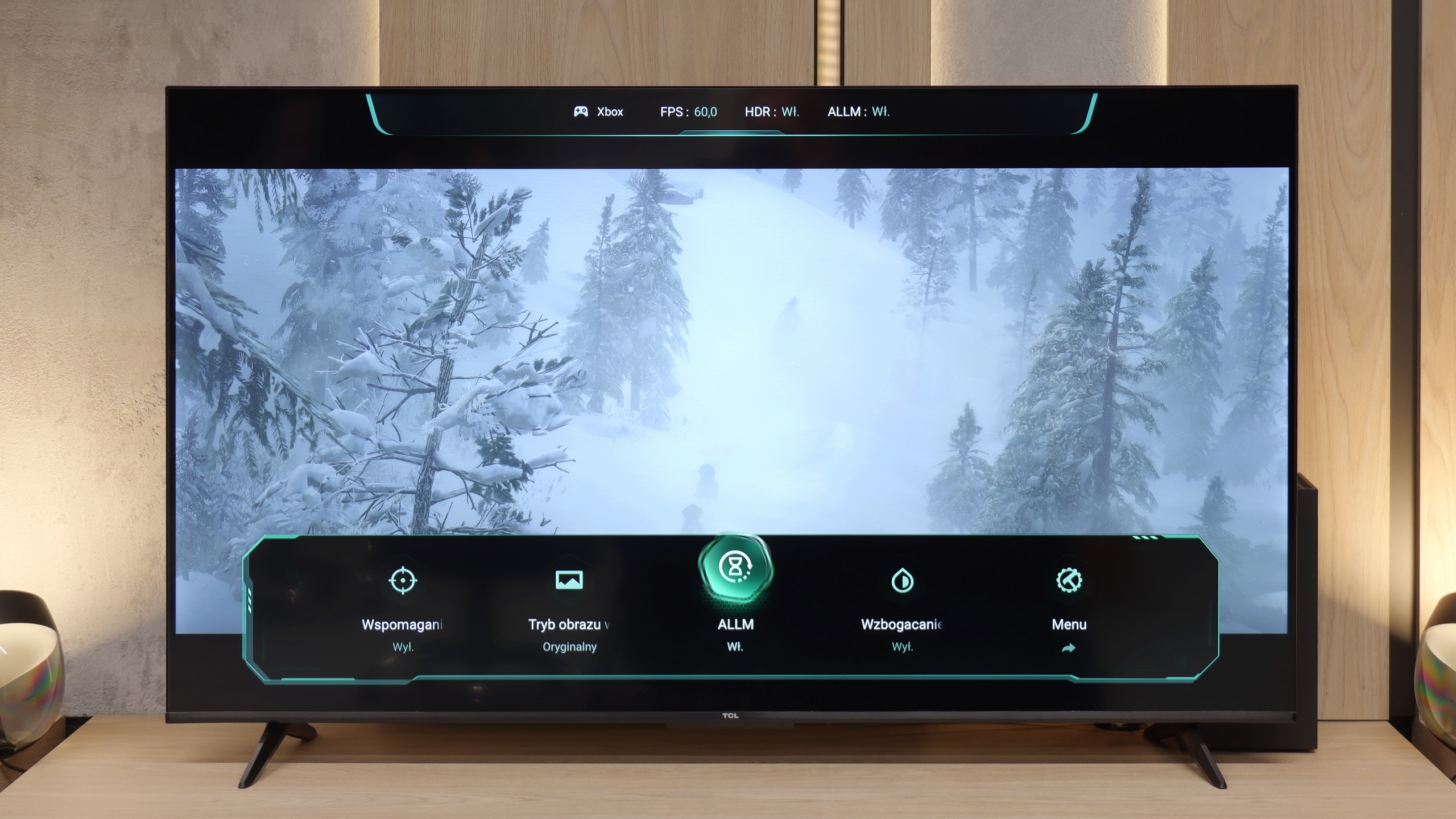
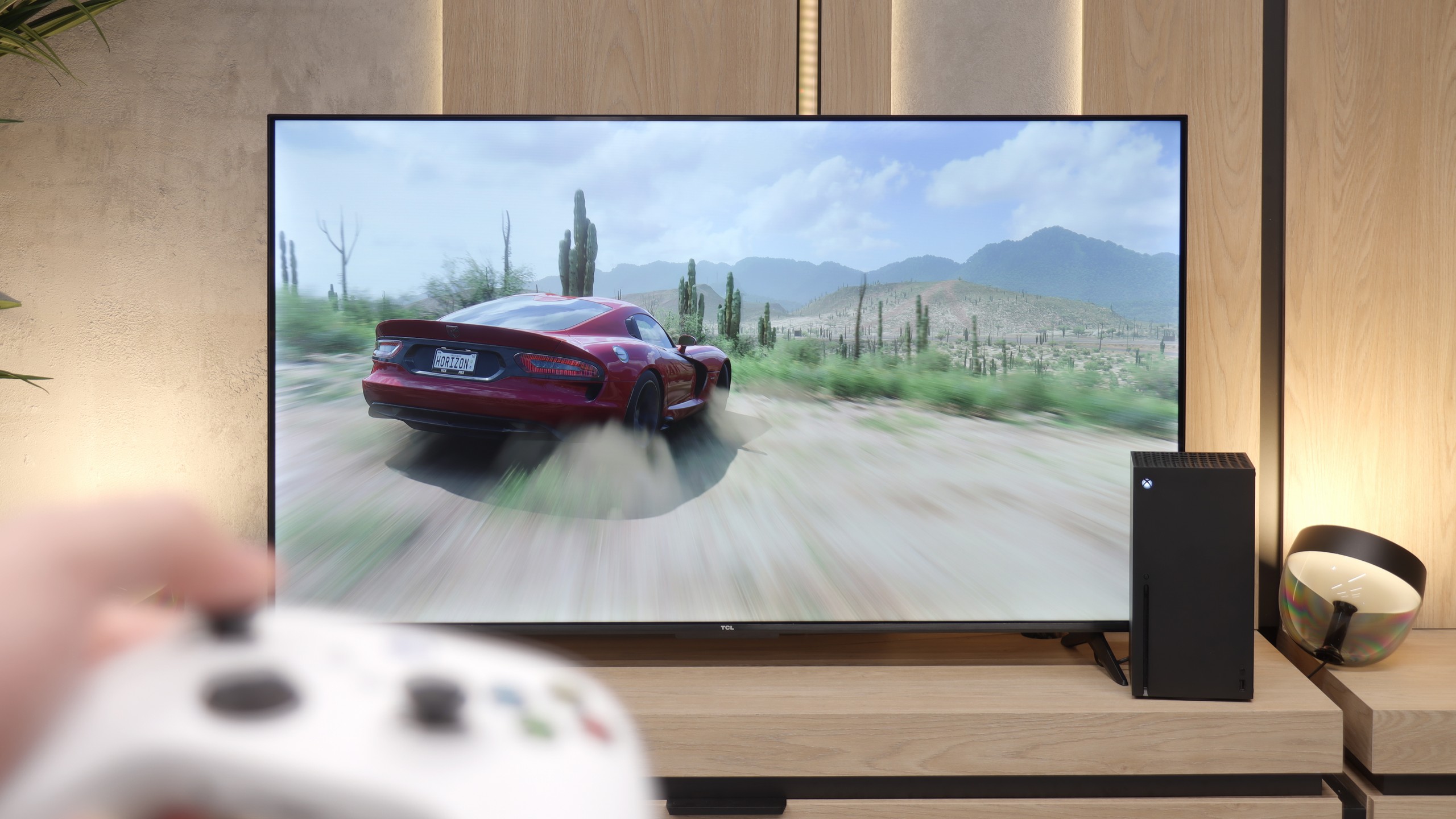

TCL V6C - Input lag
10/10
The input lag measurement shows values below 15 ms, which is a level that is practically difficult to perceive with the naked eye. Even in dynamic games, the action remains responsive, and the controls are smooth. This is a result that can confidently be considered very good and sufficiently adequate for most players, even if the V6C is not strictly gaming hardware.
| SDR | HDR | Dolby Vision |
|---|---|---|
| 1080p60: 14 ms | 2160p60: 13 ms | 2160p60 DV: 13 ms |
| 2160p60: 13 ms |

TCL V6C - Compatibility with PC
4/10
Chroma 444 (maximum resolution and refresh rate): Yes
Font clarity: Average
Readability of dark text and shapes: Average
Input lag in PC mode (4K, maximum refresh rate): 13ms
Matrix subpixel arrangement: BGR
Max refresh rate: 60Hz
G-Sync: No
Cooperation with a PC is only partially satisfying. The television supports chroma 4:4:4, so at first glance, the fonts look quite decent. The problem arises when we take a closer look – under the microscope, it turns out that TCL has used an atypical subpixel arrangement in the V6C. Instead of the classic vertical layout, we have a horizontal arrangement here, which in practice causes various artifacts and unevenness in displaying letters. As a result, the fonts can appear jagged, and after prolonged use, the text can be straining on the eyes. Therefore, it’s hard to regard the V6C as a sensible substitute for a monitor – while it’s suitable for the occasional opening of a browser or watching content from a computer, it simply doesn't work as a primary screen for work. There’s also not much to say about gaming features, as they simply aren’t present.
TCL V6C - Viewing angles
2.9/10
Brightness drop at an angle of 45 degrees: 79%
The viewing angles on the V6C are the classic compromise we know from VA matrices. We gain solid black when watching straight on, but just a slight shift to the side clearly diminishes the image quality – colours fade and contrast drops. This is a typical limitation of this technology and probably won’t surprise anyone who has previously dealt with TVs. In practice, this means that the V6C works best in a “one sofa” setup – when watching straight in front of the screen, the black looks decent, but a larger group of viewers spread across the living room will quickly notice differences in the displayed image.
TCL V6C - TV efficiency during daytime
3.6/10
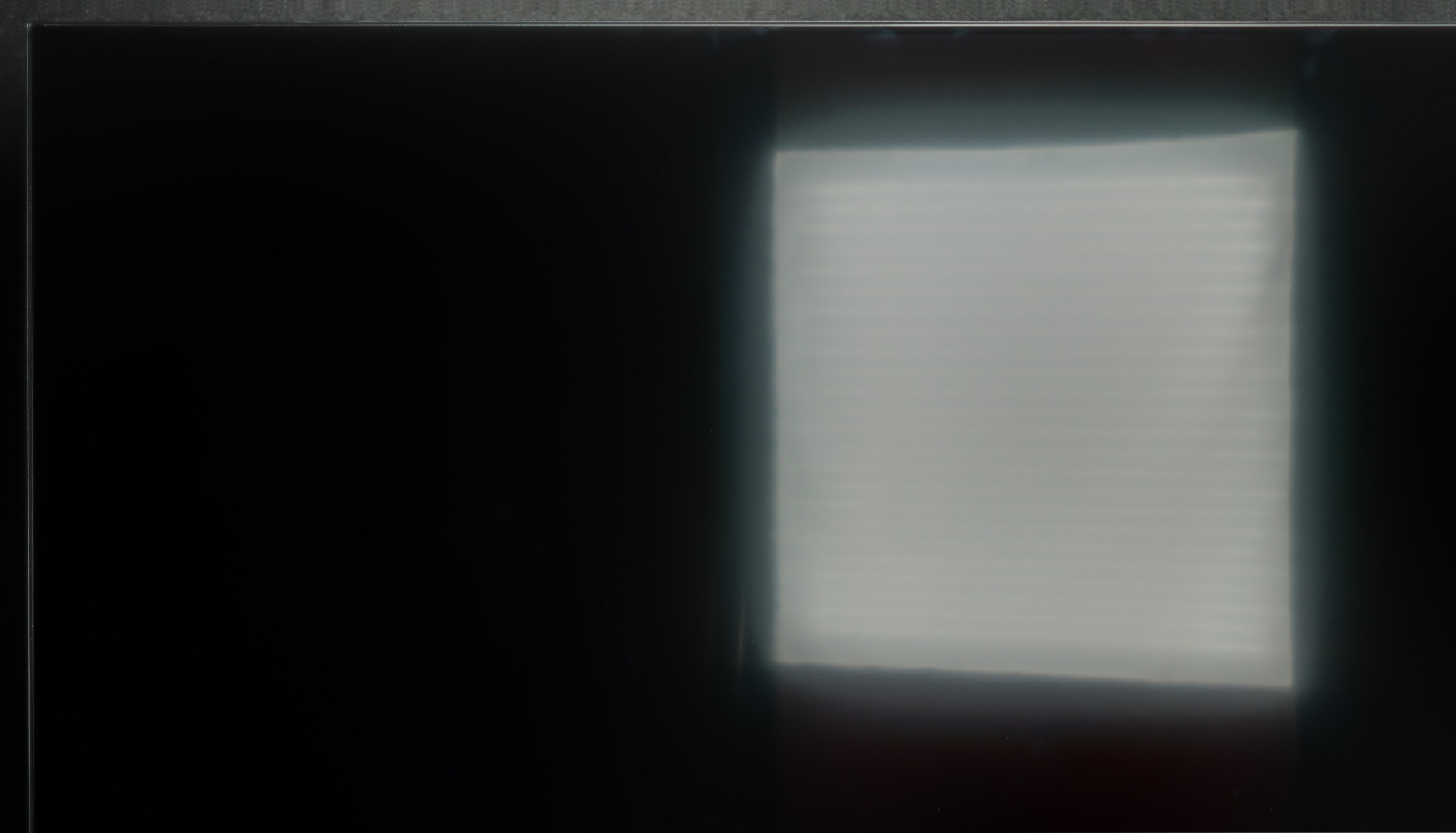
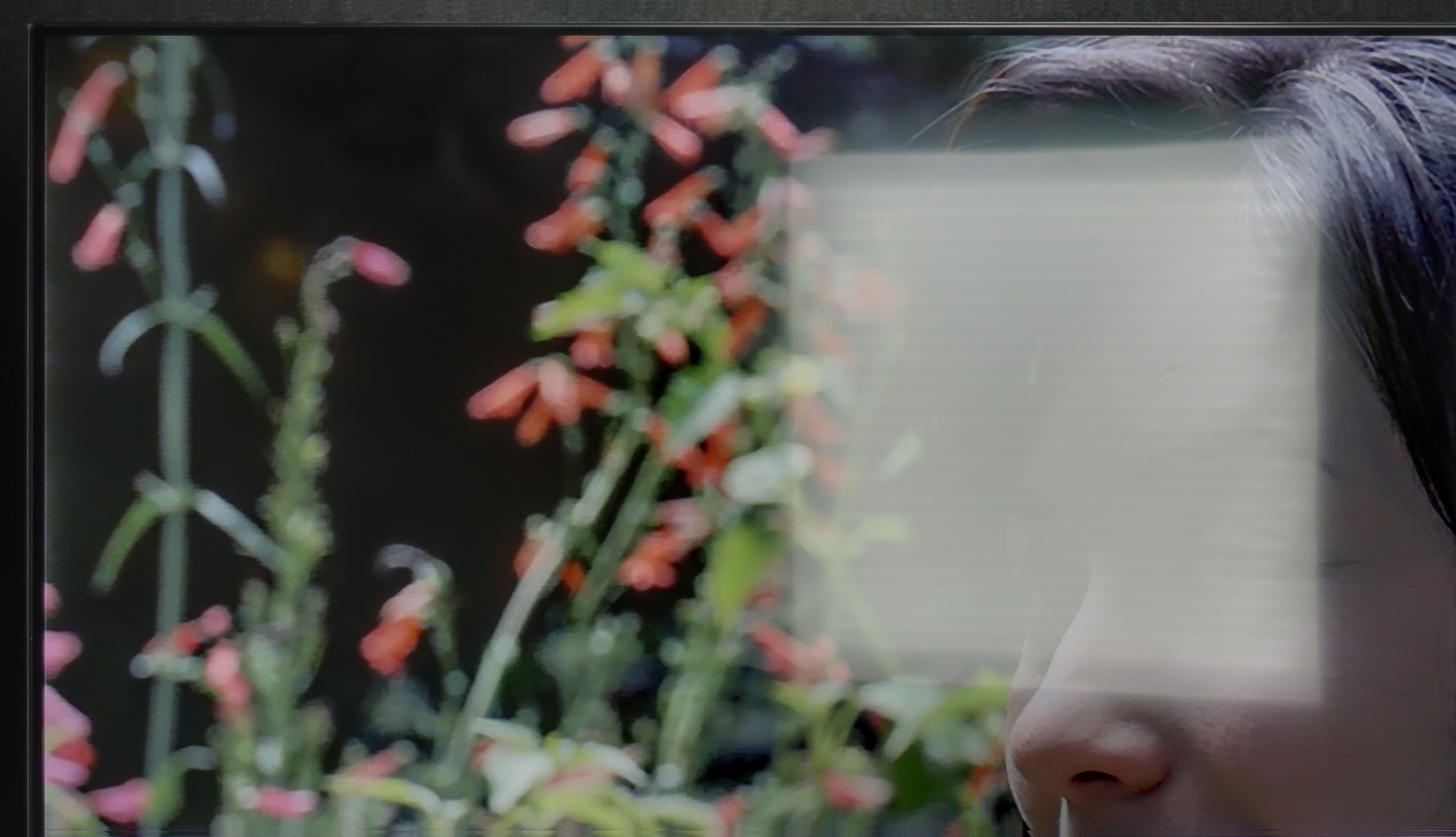
Matrix coating: Satin
Reflection suppression: Decent
Black levels during daytime: Good
The V6C’s performance during the day isn’t one of its strong points. It’s a relatively dim television, which is why it simply struggles in heavily lit rooms. The satin finish on the panel somewhat dampens reflections and does indeed reduce troublesome glares, but it’s not enough to speak of full viewing comfort. When a lot of natural light floods into the room, the screen isn’t able to “break through” it, causing the image to appear dull and hard to read. The V6C is definitely a piece of equipment that feels much better suited for evening viewing than for sunny afternoons.
Matrix brightness
Average luminance SDR
TCL V6C: 210 cd/m2
TCL V6C - TV features
7.3/10
System: Google TV
System performance: Average
- HDMI inputs: 3 x HDMI 2.0, 0 x HDMI 2.1
- Outputs: Toslink (Optical audio), eARC (HDMI), ARC (HDMI)
- Network Interfaces: Wi-Fi 2.4GHz, Wi-Fi 5GHz, Ethernet (LAN) 100Mbps
- TV reception: DVB-T, DVB-T2, DVB-S, DVB-S2, DVB-C
Classic features:
Recording to USB (terrestrial TV): No
Recording programming: No
Picture in Picture (PiP): No
RF remote control (no need to aim at the screen): RF
Backlit remote control: No
Teletext: Yes
Audio only mode: Yes
Bluetooth headphones support: Yes
Simultaneous Bluetooth headphones & TV audio: Yes
Smart features:
AirPlay: Yes
Screen mirroring (Windows Miracast): Yes
Voice search: Yes
Voice search in native language: Yes
Ability to connect a keyboard and mouse: Yes








SmartTV: GoogleTV
The biggest asset of the V6C is the Google TV operating system. It's an advanced platform that provides access to a vast array of applications – from YouTube, Netflix, Disney+ and HBO Max, to less popular programs that can be easily downloaded from the Google store. Additionally, there are useful features such as AirPlay, screen mirroring, and voice search. However, it’s important to note that Google TV is not the lightest system. In the case of the V6C, which is a budget television, there are sometimes noticeable lags and slower interface responses. This doesn't ruin everyday use, but it can be felt, especially compared to more expensive TCL models or competitors.
Classic Features
The V6C also doesn’t forget about solutions for those who use television in a traditional way. The package includes a classic remote with a large number of buttons, including a full numeric keypad. This is practical for people watching terrestrial or cable television. The television also offers teletext and a clear interface for managing channels. Notably, the Bluetooth support is hassle-free – we can easily pair headphones or a speaker. Therefore, the V6C performs solidly as an everyday television, though one must remember certain limitations. There’s no USB recording or picture-in-picture (PiP) mode, which are features that mainly older users might need. (Though not only 😉).
Sound connection options
HDMI audio:
Other audio outputs:
Toslink: Yes
Wireless audio:
Bluetooth: Yes
Obsługiwane formaty audio:
Dolby Digital Plus 7.1: Yes
Dolby True HD 7.1: No
Dolby Atmos in Dolby Digital Plus (JOC): Yes
Dolby Atmos in Dolby True HD: No
DTS:X in DTS-HD MA: Yes
DTS-HD Master Audio: Yes
Ułatwienia dla seniorów
Numeric keyboard on TV: Yes
Font size adjustment: No
Audio description: Yes
TCL V6C - Apps
9.6/10























TCL V6C - Playing files from USB
8.7/10

| Maximum photo resolution: | Supported photo formats: |
|---|---|
Playing files from USB on the V6C is quite decent. The built-in player handles most popular video and audio formats well, and during tests, we didn't encounter significant issues with typical files. The biggest problem arose with very high-resolution photos - above 20 Mpix, the TV often refused to cooperate. We also noticed some minor functionality gaps regarding video playback. The video player lacks the option to change font colours, which worked without issues in other TCL models. Fortunately, these are inconveniences that are easy to get around. Thanks to Google TV, you can install external applications like VLC or KODI, which solve most problems and offer much broader file handling capabilities.
TCL V6C - Sound
5.8/10
83dB
Maximum volume
Supported codecs
(TV speakers)
Dolby Digital Plus 7.1
Dolby True HD 7.1
Dolby Atmos in Dolby Digital Plus (JOC)
Dolby Atmos in Dolby True HD
DTS:X in DTS-HD MA
DTS-HD Master Audio
The sound on the V6C doesn't stand out from the competition in the same price range. The audio is quite flat, and there's simply a lack of bass. Fortunately, the television can play loud – measured at 83 decibels, it's a pretty decent result, and importantly, even at maximum volume, there is no unpleasant crackling that often plagues cheaper models. However, it's worth noting the support for advanced surround sound formats rather than just the quality of the built-in audio. The V6C handles Dolby Atmos and DTS:X, so connecting a soundbar or another external audio system won't be an issue and will allow full use of these codecs. This is a good sign for those planning to expand their setup with additional audio equipment.
Acoustic Measurements
83dBC (Max)
75dBC
TCL V6C - Details about the matrix
Software version during testing: V8-0008T01-LF1V441.001532
Image processor: rtd6748 2gb ram
Subpixel Structure:
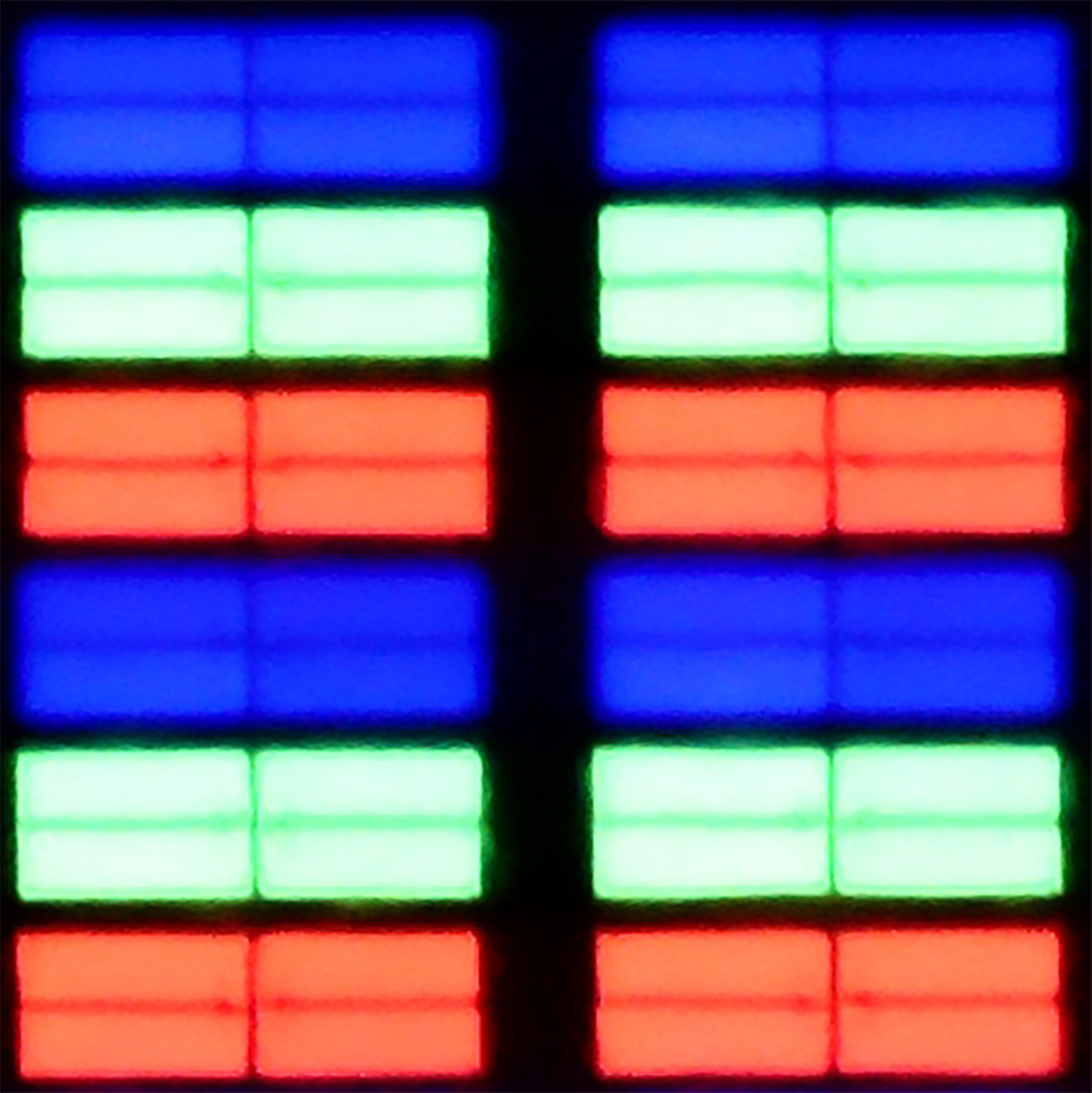
Panel uniformity and thermal imaging:
Backlight Type: White LED

Founder and originator of the "ChooseTV" portal

Journalist, reviewer, and columnist for the "ChooseTV" portal
See articles related to TCL V6C:
5/13/2025
